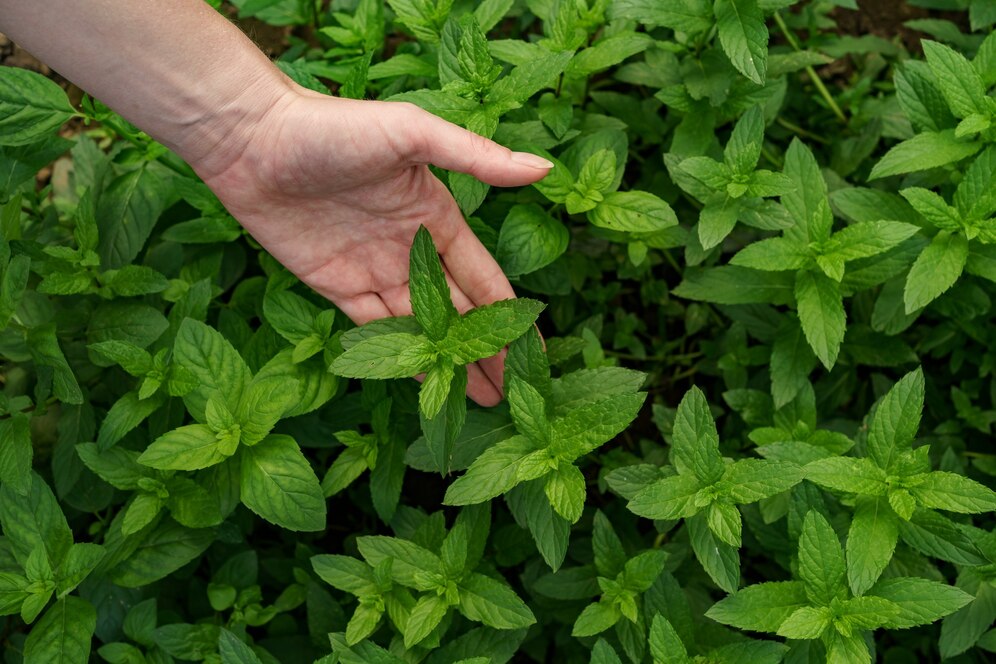Gardening is a rewarding hobby that offers numerous benefits, from providing fresh herbs for your kitchen to enhancing your living space with greenery. However, not everyone has access to a large garden. For those living in apartments or homes with limited outdoor space, creating a herb garden might seem challenging. Fortunately, with some innovative ideas and practical tips, you can grow a thriving herb garden in even the smallest of spaces. Here’s how to get started.
Choosing the Right Herbs
When space is limited, it’s essential to choose herbs that will thrive in confined areas and provide the most benefit for your needs. Here are some herbs that are particularly well-suited for small spaces:
- Basil: Great for cooking, especially in Italian dishes.
- Chives: Perfect for garnishes and salads.
- Mint: Versatile for teas, desserts, and cocktails.
- Thyme: Excellent for roasting meats and vegetables.
- Parsley: A versatile garnish and ingredient in many recipes.
- Oregano: Ideal for pizzas and Mediterranean dishes.
- Cilantro: Essential for many Mexican and Asian dishes.
Choosing compact or dwarf varieties of these herbs can also help maximize your space.
Innovative Gardening Containers

Using creative containers is key to maximizing small spaces. Here are some innovative ideas for herb garden containers:
- Vertical Gardens: These can be mounted on walls or placed on balconies. Use wall-mounted planters, hanging pockets, or even repurposed shoe organizers.
- Window Boxes: Perfect for windowsills, these boxes allow you to grow herbs in natural sunlight.
- Hanging Baskets: Suspend these from ceilings or balcony railings to save floor space.
- Mason Jars: Attach them to a wooden board and mount it on a wall for a rustic, space-saving garden.
- Pallet Gardens: Use an old pallet to create a vertical garden by filling the slats with soil and planting herbs in the gaps.
Utilizing Indoor Spaces
Indoor herb gardens can thrive with the right conditions. Here are some tips for growing herbs indoors:
- Lighting: Herbs need plenty of light, so place them near windows with ample sunlight.
- If there’s not enough natural light, think about using grow lights to supplement the lighting.
- Temperature and Humidity: Most herbs prefer temperatures between 60-70°F. Keep them away from cold drafts and heating vents.
- Soil and Watering: Use well-draining soil and be careful not to overwater. Herbs generally prefer slightly dry conditions between watering.
Creating a Balcony Herb Garden
Balconies offer a great opportunity for herb gardening. Here are some tips for maximizing balcony space:
- Rail Planters: Attach planters to the balcony railing to free up floor space.
- Stacked Pots: Use tiered planters or stack pots to create a vertical garden.
- Rolling Carts: A rolling cart with multiple shelves can be moved to catch the best sunlight and provide ample planting space.
- Compact Furniture: Choose small, multi-functional furniture to ensure there’s still room for your garden.
DIY Projects for Herb Gardens
Engage in some DIY projects to customize your herb garden to fit your space perfectly. Here are a few ideas:
- Hanging Herb Garden: Create a hanging garden using a wooden frame, some rope, and small pots. This is ideal for balconies or patios.
- Recycled Planters: Use recycled materials like tin cans, old teapots, or even plastic bottles to create unique planters.
- Ladder Planter: Repurpose an old ladder by adding wooden planks across the rungs to create a multi-tiered planter.
- Pegboard Planter: Mount a pegboard on a wall and use hooks to hang small pots. This allows for easy reconfiguration of your garden layout.
Maintaining Your Herb Garden
Proper maintenance is crucial for a healthy herb garden. Here are some tips to keep your herbs thriving:
- Pruning: Regularly prune your herbs to encourage growth and prevent them from becoming leggy. Use the trimmings in your cooking.
- Pest Control: Watch for pests like aphids and spider mites. Use natural remedies such as neem oil or insecticidal soap.
- Fertilizing: Herbs don’t need much fertilizer. A light feeding with a balanced, water-soluble fertilizer every few weeks should suffice.
- Harvesting: Harvest herbs regularly to encourage new growth. Avoid cutting more than one-third of the plant at a time.
if you plan to fertilize for indoor plants, visit page
Seasonal Considerations
Different herbs have different growing seasons, and this can impact your gardening strategy:
- Warm-Season Herbs: Basil, oregano, and thyme thrive in warm weather. Plan to grow these during spring and summer.
- Cool-Season Herbs: Parsley, cilantro, and chives prefer cooler temperatures. These can be grown in fall and early spring.
- Indoor Growing: If you live in a region with harsh winters, consider growing herbs indoors year-round.
Troubleshooting Common Issues
Even with the best care, you might encounter some problems. Here’s how to handle common issues:
- Yellowing Leaves: Often a sign of overwatering or poor drainage. Ensure your pots have drainage holes and reduce watering frequency.
- Wilting: This can be caused by underwatering or root-bound plants. Check the soil moisture and consider repotting if necessary.
- Leggy Growth: Usually due to insufficient light. Move your plants to a sunnier spot or add supplemental lighting.
Conclusion
Creating a DIY herb garden in small spaces is not only possible but also incredibly rewarding. With the right selection of herbs, innovative containers, and proper care, you can enjoy fresh, home-grown herbs year-round, regardless of your living situation. Embrace these ideas and tips to transform even the smallest space into a lush, green herb haven.



